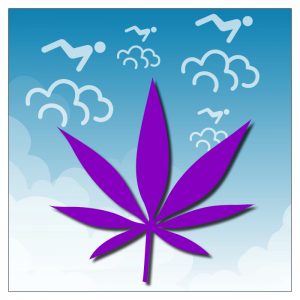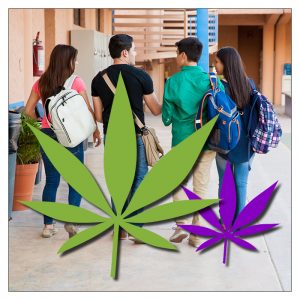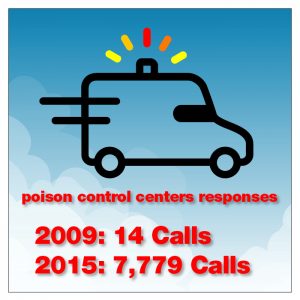Synthetic marijuana products like Spice and K2 have been ravaging America’s youth for years, and they can still be found in many gas stations and convenience stores near you. The problem has only worsened since synthetic cannabinoids hit the market around 2009.
Why Are Synthetic Cannabinoids Dangerous?
Synthetic cannabinoids are chemically produced substances designed to mimic the effects of tetrahydrocannabinol (THC), the primary mind-altering ingredient in marijuana. These cannabinoids are often marketed as offering “legal highs” and can be purchased online, in gas stations, convenience stores, and smoke shops. The exact composition of synthetic cannabinoids is unpredictable due to constantly changing chemicals used in manufacturing the drugs.
 Synthetic cannabinoids were originally produced for research purposes, to determine the impact of marijuana on brain functioning and its efficacy in treating pain. They were never meant for human consumption. The chemicals are now either sprayed on dried, shredded plantlike material to be smoked, or sold as liquids to be vaporized in e-cigarettes and other similar devices.
Synthetic cannabinoids were originally produced for research purposes, to determine the impact of marijuana on brain functioning and its efficacy in treating pain. They were never meant for human consumption. The chemicals are now either sprayed on dried, shredded plantlike material to be smoked, or sold as liquids to be vaporized in e-cigarettes and other similar devices.
Although they are perceived to be legal by many, all cannabimimetic agents are considered Schedule I drugs, pursuant to the Synthetic Drug Abuse Prevention Act of 2012, which was signed by President Barrack Obama on July 9, 2012. The problem is that rogue chemists keep creating new versions to circumvent the laws. In 2009, only two known synthetic cannabinoids were on the market; by 2012 that number had jumped to 51.
Who is At Risk?
 According to the Drug Enforcement Administration (DEA), the primary users and abusers of synthetic cannabinoids are youth, who are able to purchase and use it legally. Part of the appeal of using “fake weed” is that it will not show up in most drug tests and is often more easily attainable than its illicit drug counterpart. The 2015 Monitoring the Future Survey showed that synthetic cannabinoids are the second most abused illicit drugs among high schoolers, after marijuana.
According to the Drug Enforcement Administration (DEA), the primary users and abusers of synthetic cannabinoids are youth, who are able to purchase and use it legally. Part of the appeal of using “fake weed” is that it will not show up in most drug tests and is often more easily attainable than its illicit drug counterpart. The 2015 Monitoring the Future Survey showed that synthetic cannabinoids are the second most abused illicit drugs among high schoolers, after marijuana.
While distributors of the drug may market it as producing an identical high to marijuana, synthetic cannabinoids have proven to be potentially far more dangerous. These products are often labeled “not for human consumption” and have led to side effects like nausea, increased agitation, elevated heart rates, high blood pressure, panic attacks and, in some cases, death.
Calls to poison control centers about synthetic cannabinoids reached an all-time high in 2015. In 2009, U.S. poison control centers responded to 14 calls related to synthetic cannabinoids; in 2015, they responded to 7,779.
 Common Street Names
Common Street Names
- Spice
- K2
- Yucatan Fire
- Genie
- Blaze
- Dark Knight
- Earthquake
- Dank
- G-Force
- Ninja
- Puff
- Bliss
- Black Mamba
- Fire n’ Ice
The above list represents just a small fraction of all of the synthetic cannabinoids available. New psychoactive substances (NPS) are created regularly in an effort to circumvent legislation and evade law enforcement. Additionally, the several analogs associated with many of these psychoactive substances make it even more difficult to keep track of them all.
Fortunately, past month usage of synthetic marijuana has decreased among eighth, tenth and twelfth graders since 2012, according to the most recent Monitoring the Future Survey. This could be the result of increased awareness about the dangers of the drugs and/or stronger legislation preventing manufacture and distribution. All 50 U.S. states and Puerto Rico have passed legislation banning chemical substances found in synthetic cannabinoids, as has the U.S. military.



